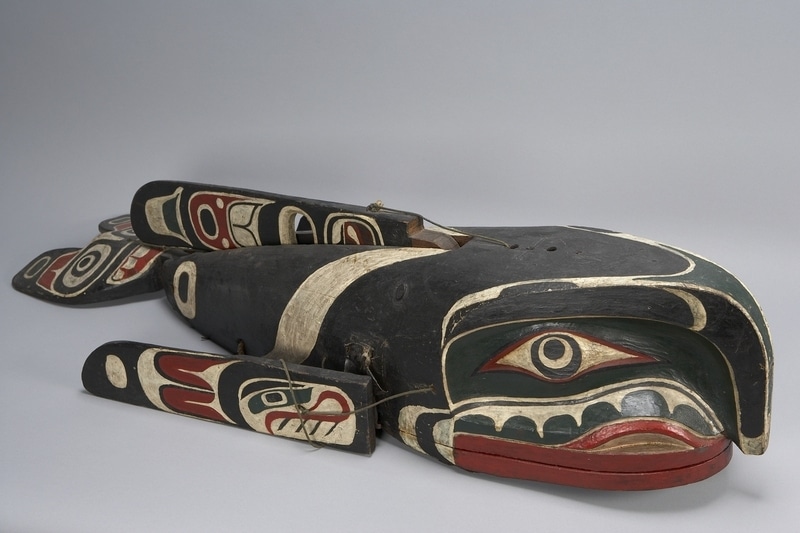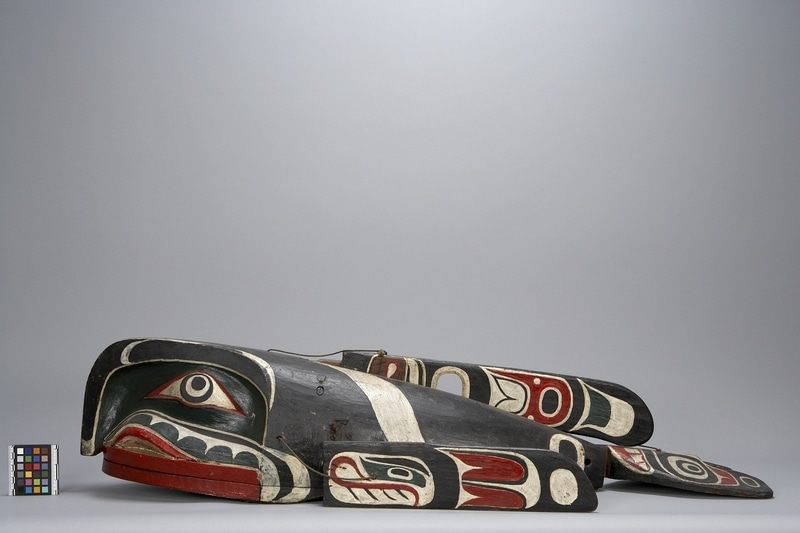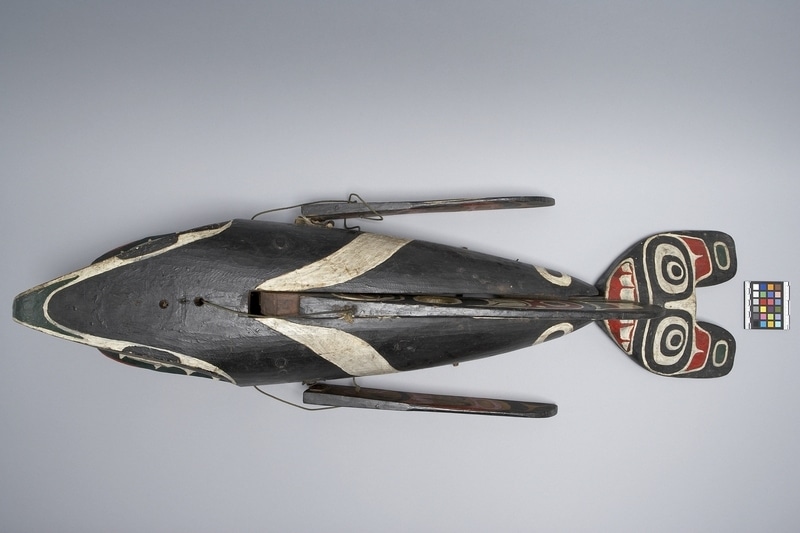Whale Mask Item Number: Nb3.1437 from the MOA: University of British Columbia




Description
Whale-shaped mask or headdress with moveable jaw, dorsal, pectoral and fluked tail fins. The moveable parts are connected by strings which work together. Black overall with red mouth, outline around eye, nostril and details on fins. Dorsal fin at centre top is in recessed channel. It is attached to headdress with wooden pegs at bottom centre of fin; ovoid hole cut in white ovoid above face, two u-shapes above. Tail flukes also formerly pegged, peg now missing; decorated with frontal face which has black and white ovoid in ovoid eyes with red split u ears and red and white mouth. Bottom, convex surface is painted with a frontal face; black outlined round eyes and grinning mouth. Red and green details on white ground. Pectoral fins, formerly hinged with nailed on leather strips which have split down centre. One side patched and also now detached. Outside of fins are fully painted with face before double split u's; inside is black and red on unpainted wood. White s-shape on each side of whale body and white ovoid at back. Holes for string attachments in all parts. Canvas head strap on bottom with remnants of blue cloth. Piece of rope strung across bottom near back. Stains, imbedded dirt and a few scrapes.
History Of Use
Danced as part of the winter ceremonials, according to rights of a particular family and in relation to other ranked dances, at specific occasions. Killer whale headdresses or masks were often so large that they covered the upper portion of the dancer's body. When worn, the dancer leaned forward to support the weight on his shoulders and upper arms, thus freeing his hands to manipulate the many strings which controlled the various appendages. The dancer's body would be covered and when danced, the whale appeared to be swimming.
Iconographic Meaning
Killer whales are important characters in Kwakwaka'wakw mythology. They are clan ancestors associated with other sea creatures. It is also associated with wealth and wealth distribution.
Cultural Context
ceremonial
Item History
- Made in British Columbia, Canada
- Owned by Walter C. Koerner before October 21, 1982
- Received from Walter C. Koerner (Donor) on October 21, 1982
What
Who
- Culture
- Kwakwaka'wakw
- Previous Owner
- Walter C. Koerner
- Received from
- Walter C. Koerner (Donor)
Where
- Holding Institution
- MOA: University of British Columbia
- Made in
- British Columbia, Canada
When
- Ownership Date
- before October 21, 1982
- Acquisition Date
- on October 21, 1982
Other
- Condition
- fair
- Accession Number
- 0836/0001